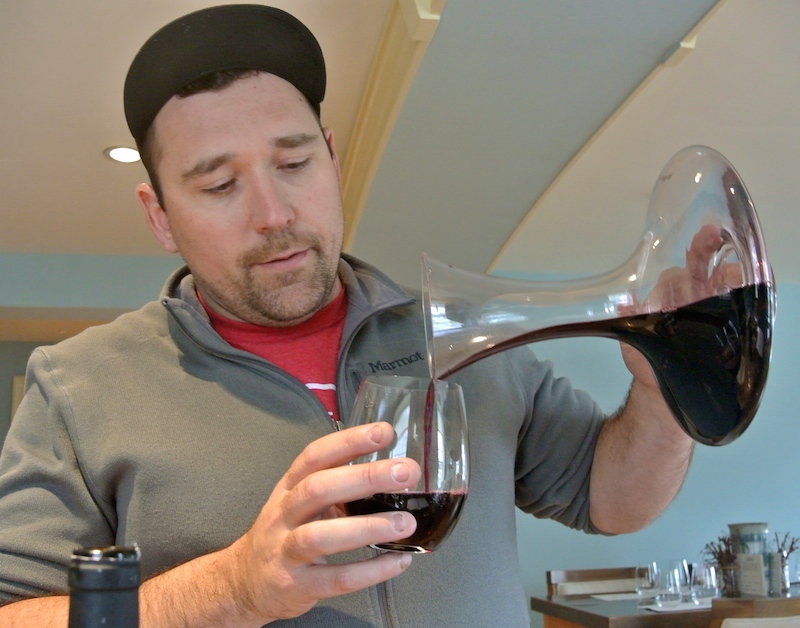
By Rick VanSickle
It is not politically correct at all to talk about this, but in these matters I lack the politically-correct gene to avoid such things (this recessive gene quirk has not always served me well) … but here goes anyway (and forgive me in advance to anyone who is offended by this).
It was a blustery spring day in St. Davids on the outer reaches of Niagara wine country; the rain tried desperately to turn into snow, and the sun strained in vain to peek through the low clouds hovering over the winter-bare vineyards.
I had just finished a brisk and thorough tasting of Ravine Vineyard’s range of Rieslings, Chardonnays, Pinot Noir, Gewurztraminer and Merlots with winemaker Marty Werner. Our palates were laid to waste.
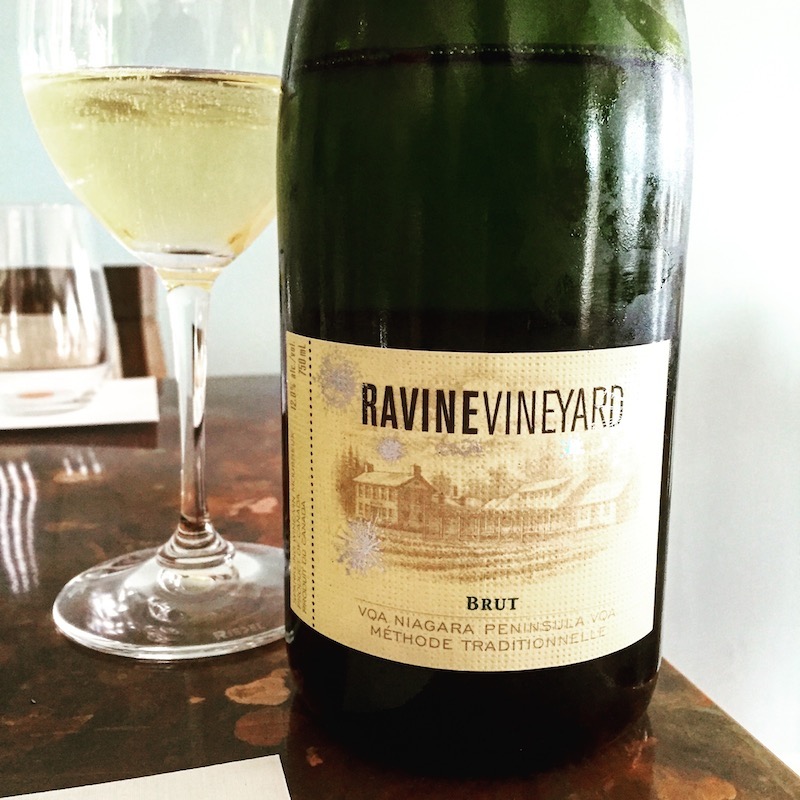
I had prepared for this very moment, having just returned from Cuba, so this was a premeditated encounter with Werner, who I knew enjoyed a well-made cigar from time to time. I brought two Partagas Coronas Gordas aged at the factory for four years. So outside we ventured, a bottle of Ravine Traditional Method Brut in tow.
I have to be totally honest here, pairing Cuban cigars with an elegant sparkling wine such as the one Werner opened had never in a million years occurred to me. Port, yes. Cognac, of course. Bourbon, whiskey, and brown spirits, for sure. Maybe even a big appassimento red, but sparkling wine? I was skeptical.
“It’s my favourite pairing with cigars,” Werner tells me as we sliced the caps off the cigars and fired them up.

I first taste the Brut and it is delicious, fresh and elegant with a rousing mousse and racy acidity that pops on the palate. Drawing in the smoke from the Cuban cigars and then sipping the sparkling wine was an experience unlike any other. The freshness of the wine cut through the tobacco and woodsy/spicy notes of the well-aged Cuban to re-awaken the palate and leave a pleasant, clean sensation behind that was surprisingly invigorating.
It was a nice treat for the both of us.
(Now, it should be said here, that smoking of any kind is bad for you even if you don’t inhale the smoke, even if Cuban tobacco leaf is bereft of all the nasty chemicals found in other tobacco products.)
But, as adults, if you choose to try something a little different with your Cuban cigars, I would highly recommend a well-made sparkler to go with them. So good, in a politically-incorrect way.
Quite a radical conclusion to the main purpose of the Ravine visit, but now that that’s out of the way … here’s what was tasted prior to the smoke-fest and what I liked from Ravine’s new wine releases:
The Rieslings
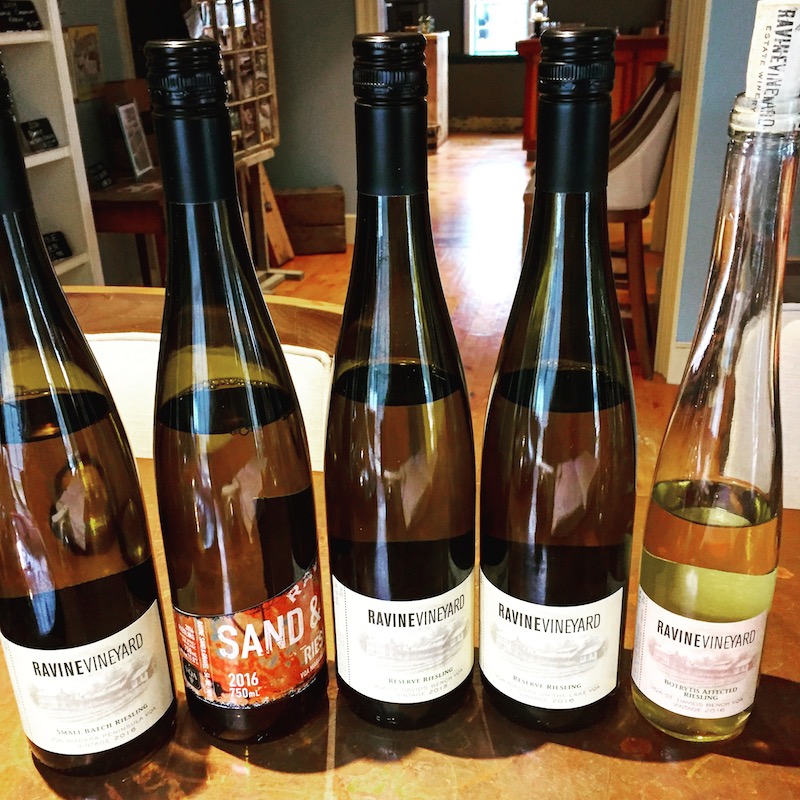
Werner covers the gamut of styles through a range of Rieslings from dry to semi-dry and all the way to the botrytised-affected Riesling with a whopping 110 grams/litre of residual sugar.
No sugar additives are used at Ravine and the estate Rieslings (like all estates wines) are made from biodynamic and organically grown fruit.
“We want to express a vintage,” Werner says. “I like our Rieslings to taste like Riesling, not big sugar.”
The reviews
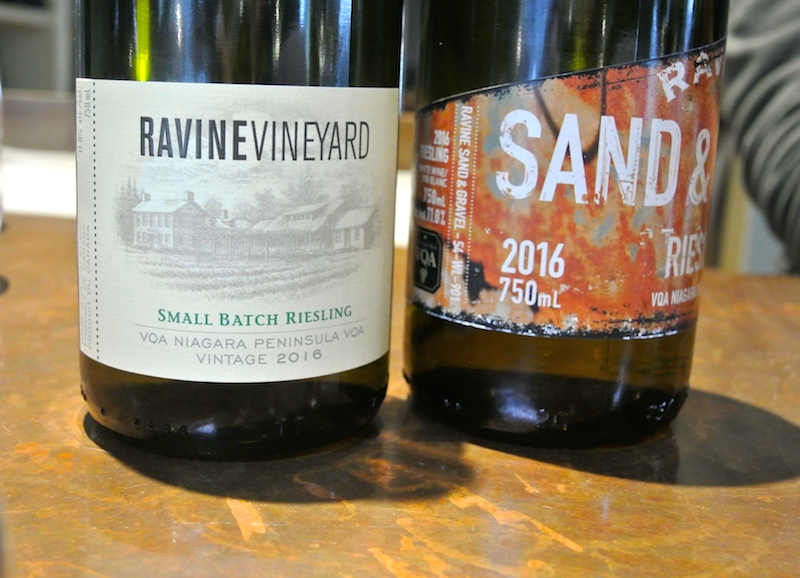
Ravine Small Batch Riesling 2016 ($22, released in June, 89 points) — With 6-8 g/litre of RS, this is essentially a very dry Riesling with a nose of grapefruit, peach, lime and saline/salty accents. It’s super-dry on the palate with tart mouth-watering fruit, river-rock minerality and electric acidity through the finish.
Ravine Sand & Gravel Riesling 2016 ($19, winery now, 88 points) — About 15 g/l of RS, it shows a riper profile on the nose with peach and citrus notes. It’s another mouth-watering rendition of Riesling with a dry impression, but riper fruit and a subtle note of ginger on the finish.
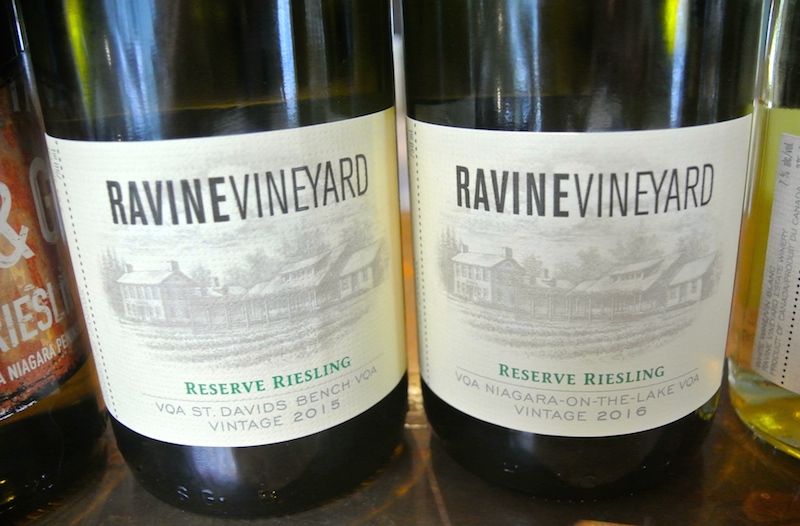
Ravine Reserve Riesling 2015 ($35, winery now, 92 points) — So, this is Riesling from the famed (and a bit mysterious) estate vineyard just behind the winery and restaurant, that slopes into a hollow where the Riesling grapes achieve anywhere from 17 to 20% botrytis every vintage. It’s finished with 30-40 g/l of RS, spends six months on the lees and has 9% abv. It’s a style that’s “a lot more elegant and subtle,” says Werner, and always unique among its peers. It’s a beautiful Riesling, one that should be cellared among the great Rieslings of Niagara. Such a unique nose of white peach, marmalade, citrus, mineral and wild alfalfa honey notes. The wine is robust and textured on the palate, with rich, ripe fruits in an off-dry style that combines minerals and seductive apricot, quince and touch of ginger that is moderately balanced by the acidity the 2015 vintage delivered. A beauty. I also tasted the 2016 vintage, not quite ready to be reviewed, but is showing the “hot and dirty” characteristics of the hot vintage. So, more botrytis, higher alcohol (12%), and up-tempo, voluptuous flavours. As Werner says: “The botrytis really came on strong, so I sacrificed balance for flavour.” It’s ripe, juicy, highly concentrated with more profound ginger notes. Slightly out of balance, but a wholly extravagant and exotic expression of high-end Riesling.
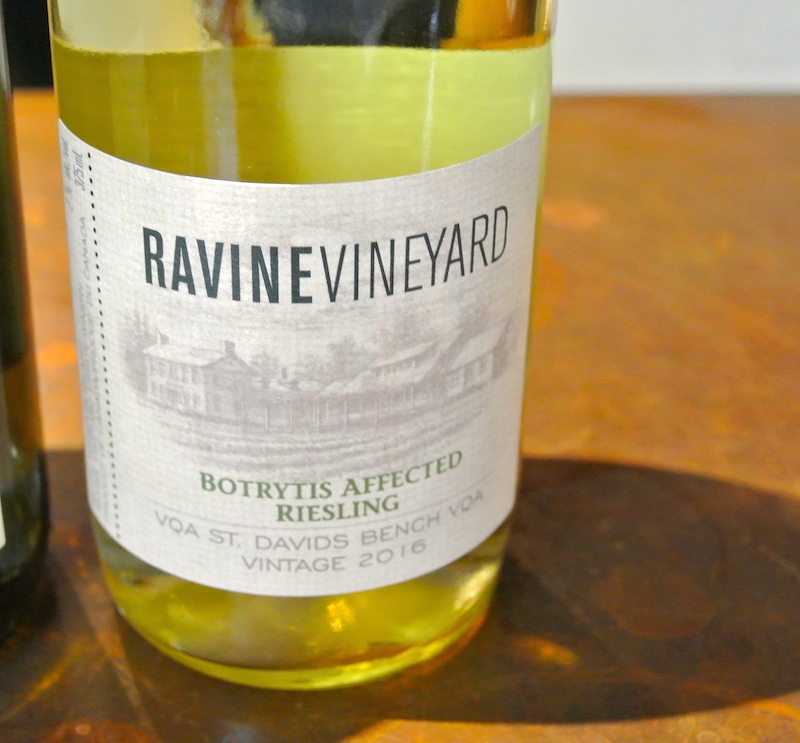
Ravine Botrytis-Affected Riesling 2016 ($48 for 375 mL, October release, 93 points) — So, this sweety, crafted from a greater concentration of boytritis-affected grapes, reaches 110 g/l of RS, a truly sweet wine. This is a decadent offering dripping in honeycomb, peach, tangerine and candied citrus notes that just feels delicate and lithe on the palate. It’s honey sweet and silky, voluptuous in fact, with texture and polish from start to finish. For all it’s beauty right out of the gate, this will be a blockbuster if left to age for five or more years. A wonder.
The Gew
Ravine Gewurztraminer 2016 ($22, winery now, 89 points) — “I have a love-hate relationship with Gewurztraminer,” admits Werner. The trick is picking Gew at maximum ripeness without sacrificing acidity and balancing that with the natural sugars that can approach 40 g/l of RS. He also doesn’t like those soapy, lychee notes common with a lot of Gew. Werner ends up picking this earlier, rather than later, with about 11% abv. It has lovely aromatics of grapefruit, rose petals and grapefruit with some sweetness but not over the top. The acidity provides some balance and there’s a lovely ginger note on the finish. Good Gew.
Hello, Chardy
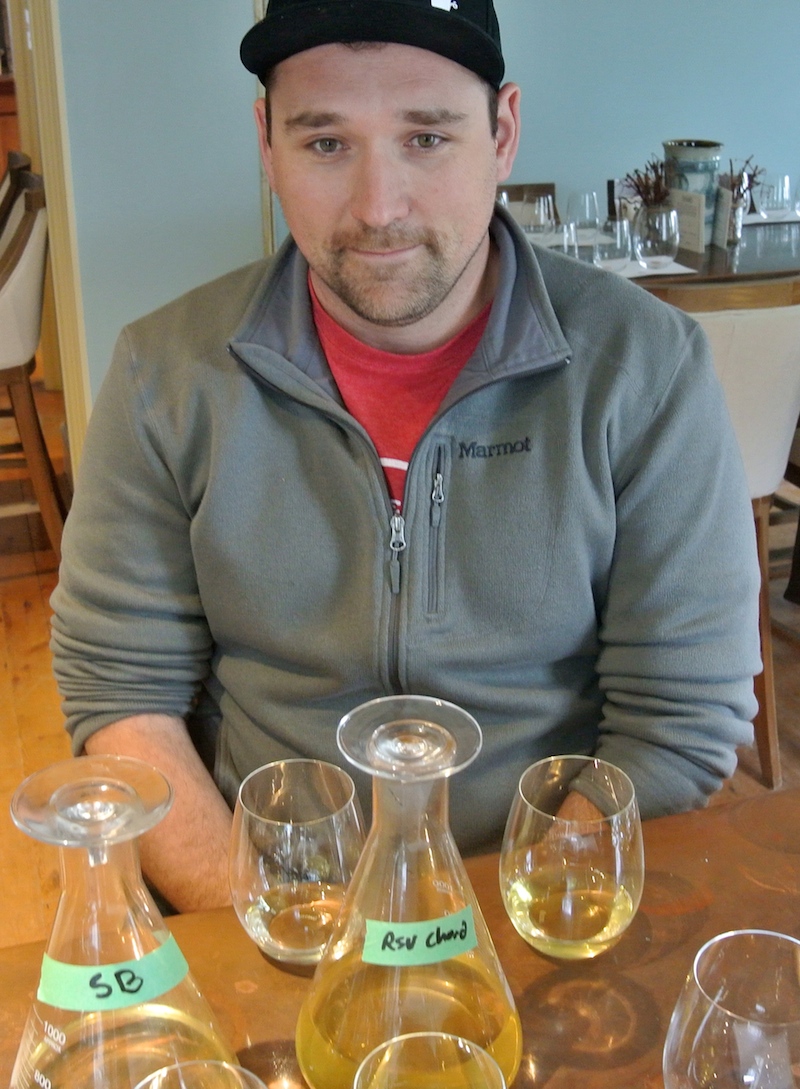
Ravine Reserve Chardonnay 2015 ($55, winery, 92 points) — A highly stylistic Chardonnay that is a blend of the top three barrels from the estate’s Chardonnay program. The wine spends 18 months in French oak barriques before being moved to larger barrels for further aging. It’s a beauty, a big, ballsy Chard with full-on aromatics of poached pear, apple, ripe citrus notes and elegant oak spices. A reductive note on the palate adds a nutty component that serves the ripe and rousing fruit on the palate quite well. It’s altogether rich and lush with high-toned spice notes and a touch of minerality that leads to a long finish that maintains a semblance of balance to the end.
The Merlots
Ravine Merlot 2014 ($35, winery, 89 points) — 2014 was a challenging vintage for Bordeaux reds such as Merlot in Niagara. It was defined by a late spring, average growing season and a wet fall, so time of picking meant everything. This has a pretty nose of ripe red fruits, cassis and spice. It’s a fresher style on the palate with grippy tannins, crunchy spice, red fruits and length through a vibrant finish. The 2015 vintage, in bottle but not released for a while, could be “the best Merlot I’ve ever made,” says Werner. It’s quite rich and robust with a nose of black cherry, bramble, earth and spice that shows elegance on the palate, lovely texture, balance and more density.
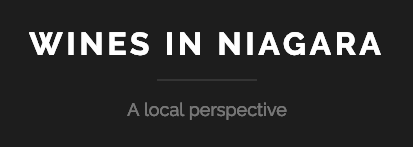






Comment here